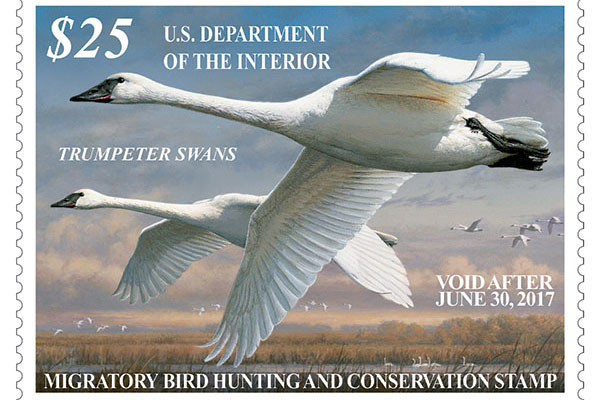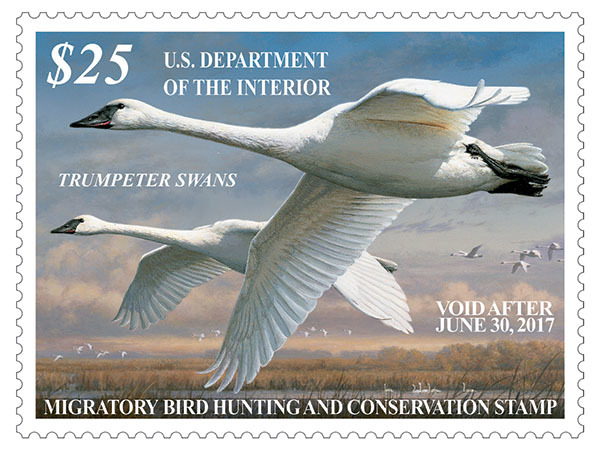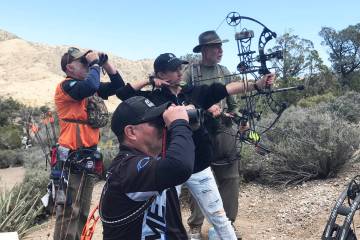Stamps are game bird hunters’ seal of approval
“You need to remind hunters to get their stamps before they go hunting.”
Such was the advice given me by two of Nevada’s more experienced sportsmen as we visited this week. Then one of the men shared the story of a forgotten conservation stamp that cost him a few hundred dollars in another state where he had gone to hunt waterfowl.
So, if you enjoy hunting birds in Nevada, consider this your reminder: Don’t forget to get your stamps before heading afield this year.
“What stamps?” you ask. The short answer is those stamps hunters are required to purchase if they plan on hunting certain classifications of game birds. Stamps whose sales help fund conservation at the state and federal level. The long answer is a little more detailed.
Depending on what birds a hunter plans to hunt this year, he may need the state upland game bird stamp, the Nevada State Duck Stamp and the Federal Migratory Game Bird Hunting Stamp. Then there is the HIP — Harvest Information Program — number. Let’s begin with the understanding that anyone who is 12 or older is required to have a valid hunting license to hunt game birds in Nevada.
In addition, anyone who is 12 or older and hunts any upland game bird species also must have a valid upland game bird stamp. Upland game birds include California, Gambel’s and Mountain quail, chukar partridge, Hungarian partridge, snowcock, blue grouse, ruffed grouse, sage-grouse and pheasant. The $10 stamp is not required for turkey, crow or dove.
State law (NRS 502.296) requires that proceeds from the sale of upland game bird stamps “be used for projects approved by the (Wildlife) commission for the protection and propagation of upland game birds and for the acquisition, development and preservation of the habitats of upland game birds in this state.”
The Nevada State Duck Stamp is required for hunters ages 12 to 64 who hunt migratory game birds. The stamp is not required to hunt mourning or white-winged dove, snipe, coots, moorhen or crows. Funding generated through sales of this $10 stamp must be used for conservation projects benefiting migratory game birds, including the “acquisition, development and preservation of wetlands in Nevada,” according to NRS 502.322.
The granddaddy of all conservation stamps is the Federal Migratory Game Bird Hunting Stamp, more commonly known as the Federal Duck Stamp. Any person who is 16 or older and hunts migratory waterfowl — ducks, mergansers, geese and swans — must have a current Federal Duck Stamp in addition to the state stamp.
The Federal Duck Stamp had its beginnings during the Great Depression when America’s sportsmen recognized the long-term impacts of development and the loss of millions of acres of breeding and nesting habitat, market hunting to supply restaurants with food, unregulated sport hunting and demands of the fashion industry. Conservation-minded hunters lobbied for creation of a Federal Duck Stamp as the means of funding conservation efforts.
The Federal Duck Stamp became mandatory in 1934 when President Franklin D. Roosevelt signed the Migratory Bird Hunting Stamp Act. The “Duck Stamp Act, as it was called, was one of the nation’s first wildlife conservation measures. As with the Pittman-Robertson Act that soon followed, it has been primarily supported by hunters, though stamp collectors and other conservation-minded folks buy the stamp as well.
The first Federal Duck Stamp sold for $1, but there have been a handful of price hikes through the years. Today the stamp sells for $25. According to the U.S. Fish & Wildlife Service, “… 98 percent of the purchase price goes directly to help acquire and protect wetland habitat and purchase conservation easements for the National Wildlife Refuge System.”
In addition to these conservation revenue stamps, hunters who pursue any migratory game bird must acquire an HIP number and write it on their hunting license. There is no charge for this number, which can be obtained at ndowlicensing.com or 1-866-703-4605.
Freelance writer Doug Nielsen is a conservation educator for the Nevada Department of Wildlife. His “In the Outdoors” column, published Thursday in the Las Vegas Review-Journal, is not affiliated with or endorsed by NDOW. Any opinions he states in his column are his own. He can be reached at intheoutdoorslv@gmail.com.
Calendar
Saturday: General quail and chukar seasons open statewide. The limit on quail is 10 birds daily and 30 in possession. The numbers are six and 18 for chukar.
Saturday: Rabbit season opens statewide for cottontail and pygmy rabbits, and white-tailed jackrabbits.
Saturday: Waterfowl season opens in the Northwest Zone. Most of the South Zone opens Oct. 15. The Moapa Valley Zone opens Oct. 29.























